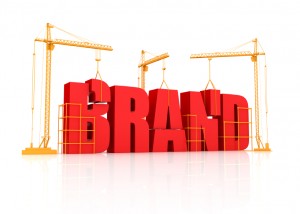Chief Stereotyping Officer

A manufactured stereotype.
Though I didn’t hold this title at my last job, I was effectively the Chief Stereotyping Officer. My job was to create stereotypes about our company and about our competitors. Like all stereotypes, the ones I created served mainly to simplify reality. Reality is complex. I wanted to simplify beliefs, values, and choices. And I wanted to tilt the scales in our favor.
My real title, of course, was Chief Marketing Officer. I created brands. And brands are nothing more than manufactured stereotypes.
The word “stereotype” has acquired negative connotations over the years. We admonish people not to stereotype. But the propensity to stereotype is innate. I call it a factory-installed bias.
In truth, we all stereotype. And we do it for very good reasons. Primarily, we stereotype to simplify the world around us. If one Volvo is safe, we may be justified in assuming that all Volvos are safe. If we had to test every Volvo to determine if it were safe or not, we might never reach a decision.
To stereotype simply means that we examine one item in a category – or one individual in a group – and reach conclusions about it. We then project those conclusions on to all members of the group.
We do this instinctively. It’s merely a simplifying assumption. And in many cases, we’re right. Most Volvos probably are safe. And that’s the purpose of branding – to convince you that all products from a particular company have common characteristics.
While the propensity to stereotype is innate, what we stereotype is based on culture and experience. Stereotypes become pernicious when they’re about people. When we stereotype gender, it becomes sexism. When we stereotype race or ethnicity, it becomes racism or ethnic prejudice. When we stereotype religions, it can lead to apocalyptic religious wars.
Stereotypes can also change over time. When I was a kid, products that were labeled “Made In Japan” were assumed to be poor quality. Now the opposite is true. Similarly, when I was young, people talked about “women drivers” as if they all behaved the same way. I don’t hear that kind of talk today so perhaps this is a stereotype that has disappeared.
Of course, most branding campaigns are not about people but about products or services. We marketers are simply taking advantage of an innate human behavior. People want to generalize about their experiences. We’d like to help you do that. We simply want to steer those generalizations in a particular direction.
People sometimes suggest that stereotyping is the sign of a lazy mind. Actually, it’s the sign a human mind. We should recognize that it’s part of who we are. At the same time, we should recognize that stereotyping people is degrading, erroneous, and just plain wrong.
Branding works because it aims directly at human nature. It’s a form of stereotyping that benefits both consumers and vendors. For consumers, it simplifies choices. For vendors, it creates strong reputations. So, let’s use stereotyping for what it’s good for and not for what it’s bad for. And, if you need a Chief Stereotyping Officer, I’m your man.
The Last of Thumb Thinking

Sure it’s dangerous. But we’re in control. No problem!
Heuristics are simply rules of thumb. They help us make decisions quickly and, in most cases, accurately. They help guide us through the day. Most often, we’re not even aware that we’re making decisions. Unfortunately, some of those decisions can go haywire — precisely because we’re operating on automatic pilot. In fact, psychologists suggest that we commonly make 17 errors via heuristics. I’ve surveyed 11 of them in previous posts (click here, here, and here). Let’s look at the last six today.
Optimistic bias — can get us into a lot of trouble. It leads us to conclude that we have much more control over dangerous situations than we actually do. We underestimate our risks. This can help us when we’re starting a new company; if we knew the real odds, we might never try. It can hurt us, however, when we’re trying to estimate the danger of cliff diving.
Hindsight bias — can also get us into trouble. Everything we did that was successful is by dint of our own hard work, talent, and skill. Everything we did that was unsuccessful was because of bad luck or someone else’s failures. Overconfidence, anyone?
Elimination by aspect — you’re considering multiple options and drop one of them because of a single issue. Often called, the “one-strike-and-you’re-out” heuristic. I think of it as the opposite of satsificing. With satsificing, you jump on the first solution that comes along. With elimination by aspect, you drop an option at the first sign of a problem. Either way, you’re making decisions too quickly.
Anchoring with adjustment — I call this the “first-impressions-never-die” heuristic and I worry about it when I’m grading papers. Let’s say I give Harry a C on his first paper. That becomes an anchor point. When his second paper arrives, I run the risk of simply adjusting upward or downward from the anchor point. If the second paper is outstanding, I might just conclude that it’s a fluke. But it’s equally logical to assume that the first paper was a fluke while the second paper is more typical of Harry’s work. Time to weigh anchor.
Stereotyping — we all know this one: to judge an entire group based on a single instance. I got in an accident and a student from the University of Denver went out of her way to help me out. Therefore, all University of Denver students must be altruistic and helpful. Or the flip side: I had a bad experience with Delta Airlines, therefore, I’ll never fly Delta again. It seems to me that we make more negative stereotyping mistakes than positive ones.
All or Nothing — the risk of something happening is fairly low. In fact, it’s so low that we don’t have to account for it in our planning. It’s probably not going to happen. We don’t need to prepare for that eventuality. When I cross the street, there’s a very low probability that I’ll get hit by a car. So why bother to look both ways?
As with my other posts on heuristics and systematics biases, I relied heavily on Peter Facione’s book, Think Critically, to prepare this post. You can find it here.